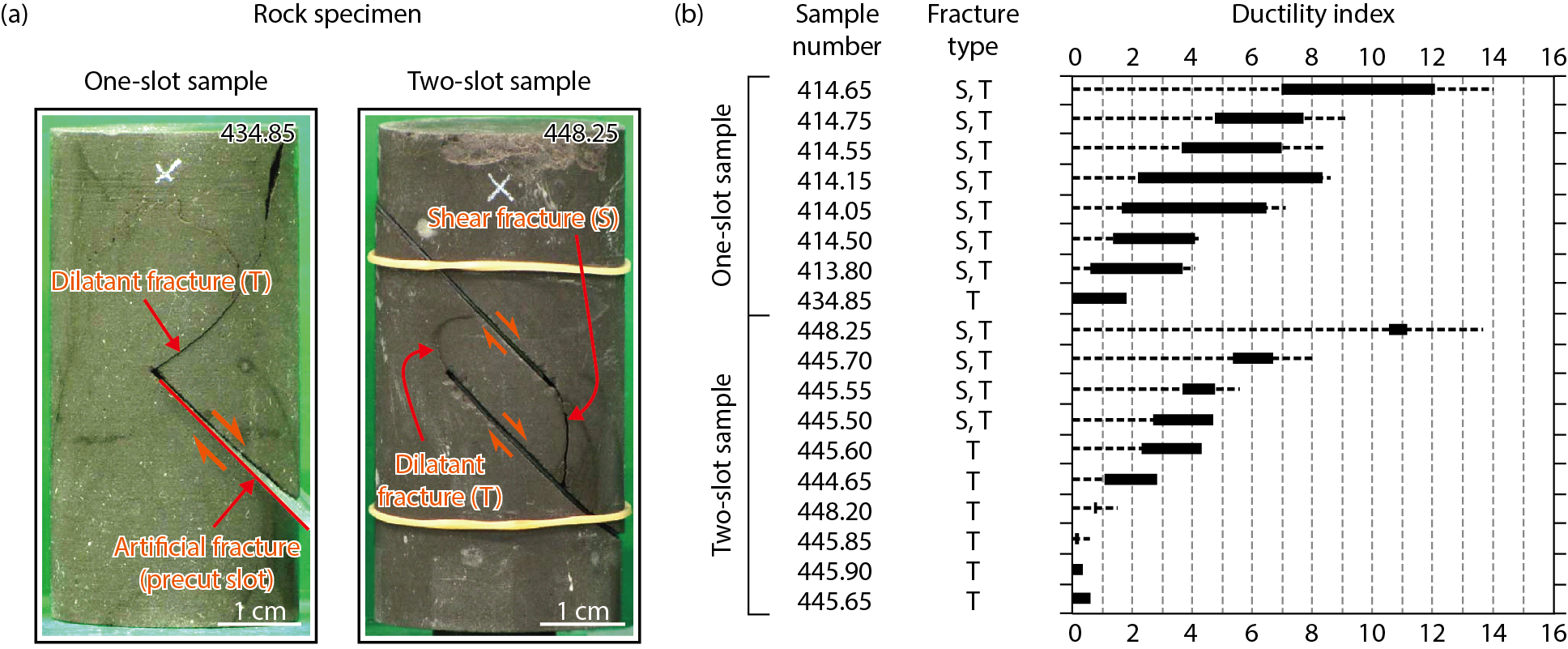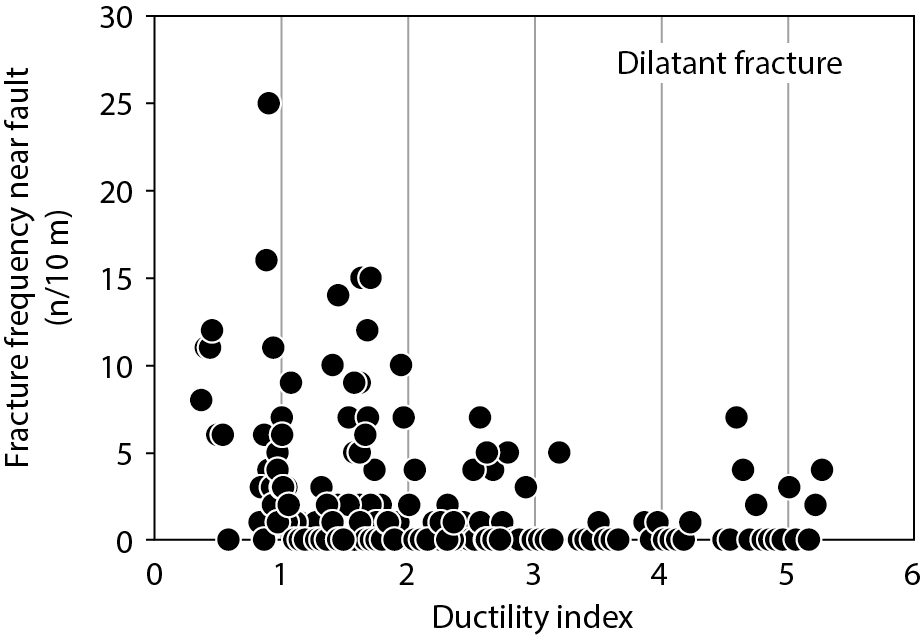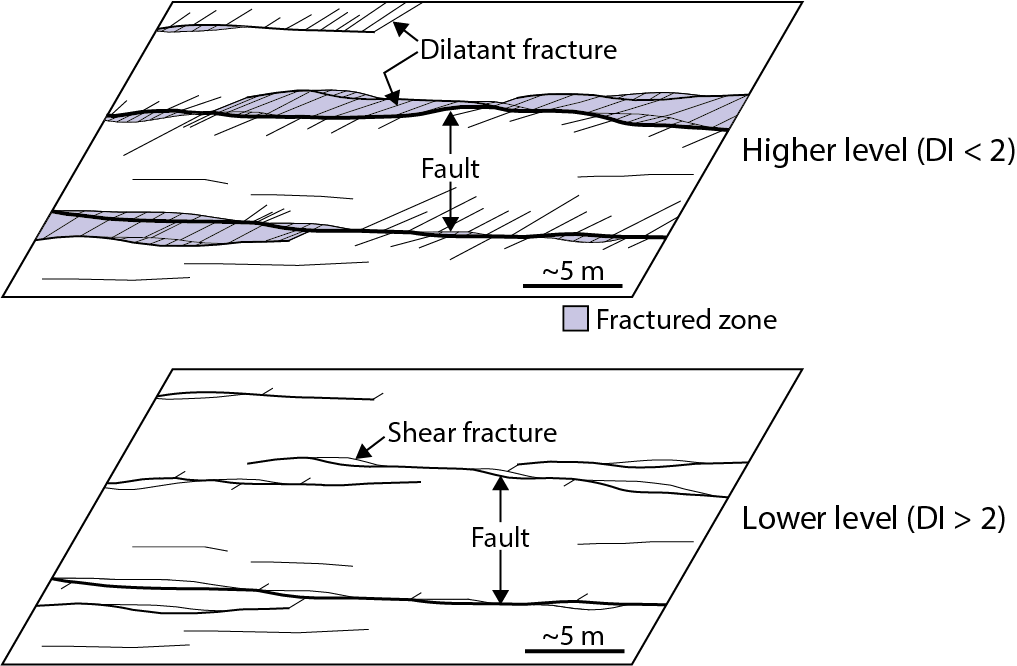
Fig.8-10 (a) Relationship between the types of fractures propagating from faults (modeled by artificial fractures) in the rock failure experiment and (b) the ductility index

Fig.8-11 Relationship between the frequency of dilatant fractures observed near natural faults in a drill core and the ductility index

Fig.8-12 Relationship between fault connectivity and the ductility index
Faults lengthen by linkage with other faults. Even though the manner of linkage may vary, faults tend to link if dilatant fractures (Fig.8-10(a)) propagate from faults as secondary fractures. However, the process by which mechanical conditions facilitate the propagation of dilatant fractures from faults has not yet been appropriately described.
This study investigated the mechanical conditions that facilitated the propagation of dilatant fractures from faults by using a new indicator, the ductility index (DI), and performing a theoretical analysis, a laboratory experiment, and field observations. The DI is defined as the effective mean stress divided by the tensile strength of the rock, and it is lower at shallower areas. The theoretical analysis revealed that dilatant fractures tend to propagate from faults when the DI is smaller or equal to 2. This result is consistent with the results of rock failure experiments that used rock specimens and the observations of natural fractures in a drill core. These experiments showed that only the dilatant fractures preferentially propagate from faults (modeled by artificial fractures) when the DI is smaller or equal to 2 (see the samples 434.85, 448.20, 445.85, 445.90, and 445.65 in Fig.8-10(b)). The core observation showed that dilatant fractures are more developed near faults where the DI smaller or equal to 2 (Fig.8-11). These results suggest that the connectivity of faults differs between shallow and deep levels even within the same formation, depending on the DIs (Fig.8-12). This is a result of vital importance to the reliable assessment of the groundwater flow during the site selection for radioactive waste disposal.